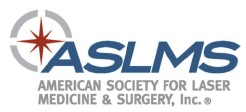Mini Facelifts are perfect for people whose skin tone is still good but who would like to minimize the nasolabial folds that run from the outside of the nostrils to the corner of the mouth. Mini Facelifts can also lift the cheeks for a younger, smoother look. Mini Facelifts focus on the lower-half of the face and because they are less invasive than traditional facelifts, recovery is faster and there are fewer risks associated. Mini Facelifts are often called “Weekend Facelifts” — procedures are often performed on Friday and bandages can come off the following Monday.
Mini Facelift at a Glance
How Do Mini Facelifts Work?
Mini Facelifts reposition skin in the lower parts of the face. Because Mini Facelifts are less invasive than traditional facelifts, Mini Facelifts are safer and recovery periods are shorter. Results are seen sooner as well.
What Do Mini Facelifts Treat?
Mini Facelifts are an excellent treatment for people whose skin tone is still good and who do not have excessive, drooping skin along the jaw line or neck. Most candidates are healthy and between the ages of 30 and 65. Mini Facelifts are also good treatments for people looking to rejuvenate previous facelifts or for those who are looking to stay ahead of the aging process.
What Are Mini Facelift Treatments Like?
Your Mini Facelift treatment will actually begin with a consultation where we can better understand your expectations and make sure that the changes you want can be accomplished with a Mini Facelift.
For the surgery, either traditional or topical anesthesia will be used, depending on the extent of the surgery. Incisions are made near the ear and hair lines. Skin is gently pulled back and excess skin is trimmed. You should expect to have eight to ten stitches near the hairline on either side of your face. These stitches will be removed about one week after surgery. Mini Facelift Surgeries typically last 1 to 2 hours.
Does It Hurt and What Can Go Wrong?
Discomfort or pain is minimized during surgery with anesthetics and controlled after surgery with prescribed pain medication. While all elective surgeries come with some type of risk, Mini Facelifts performed by accredited and experienced plastic surgeons have few complications. Risks include infection, nerve damage, and wounds healing improperly, but these are uncommon. Follow your physician’s instructions to lessen your risk of infection and to encourage a safe healing process.
After your surgery you may have a drainage tube near your incisions to remove any post-operative oozing. It is common to have some numbness in your face, but this is temporary and sensation will come back in the weeks following your procedure.
What should I expect from Mini Facelift Treatment?
Mini Facelift results are more quickly evident, but also more subtle, than traditional facelifts because they are less invasive and require less healing time. Your results will look natural, revealing smoother, more youthful facial contours and skin.
After surgery, patients have drain tubes and bandages to facilitate the healing process. These are typically removed within a few days. You may notice uneven swelling or discoloration once the bandages have been removed — this is normal and will subside after a few days. Swelling and puffiness peak 72 hours after surgery and begin to subside after that. Depending on the extensiveness of the surgery some bruising and swelling may last a couple weeks but is easily covered by make-up. Visible incision scars will remain pink for several months after surgery but will become less visible scars with time.
Minimize strenuous activity for about a week after surgery. To promote healing we recommend that you sleep with your head elevated during this time, avoid sun exposure, smoking, alcohol, and saunas. You’ll be able to return to work in a few days.
For more information about Mini Facelift, we encourage you to call to schedule an in-office consultation.


